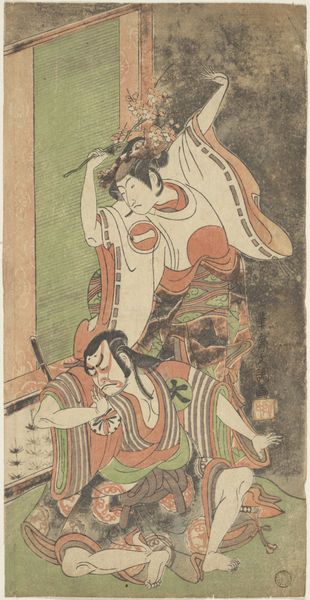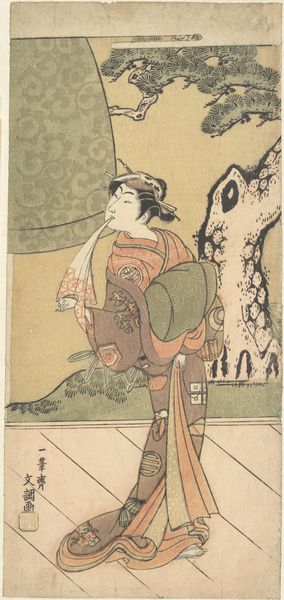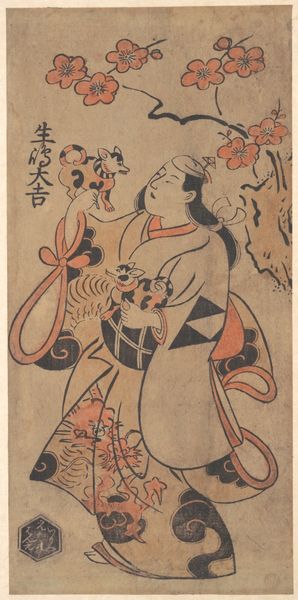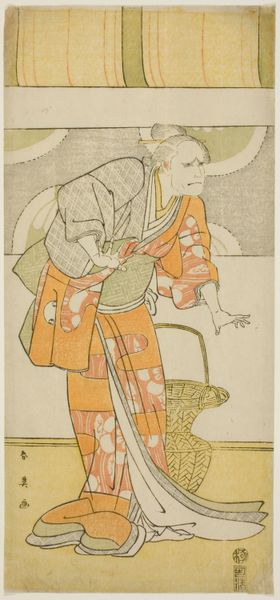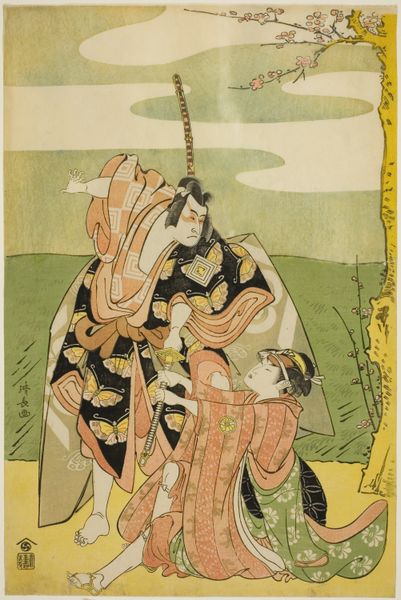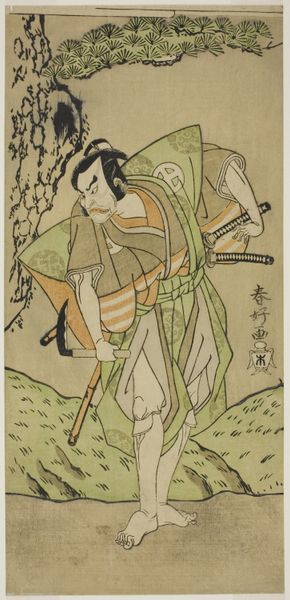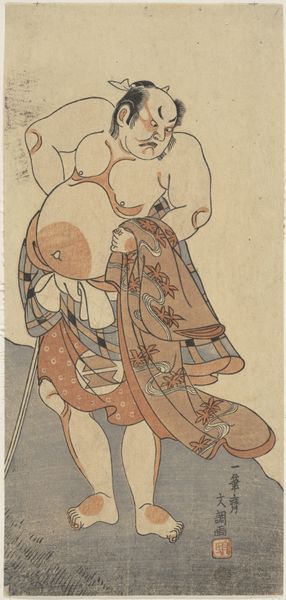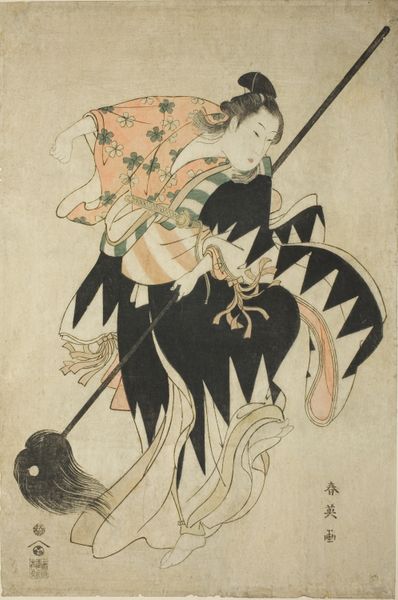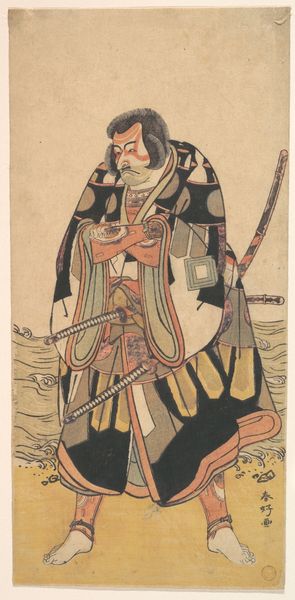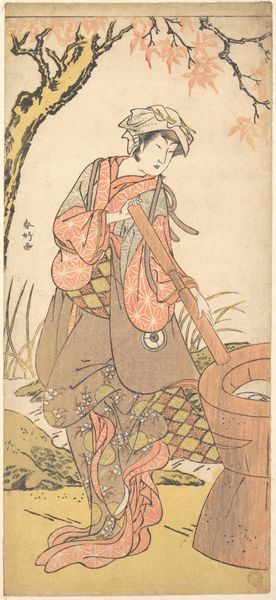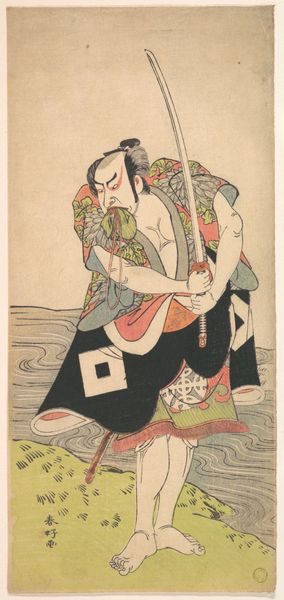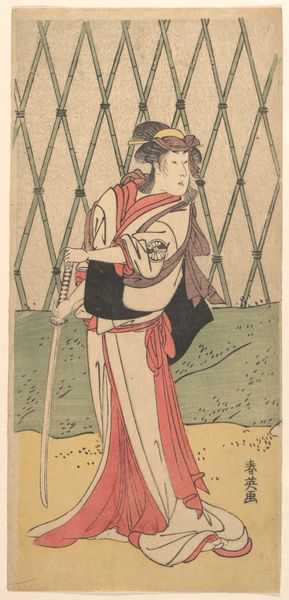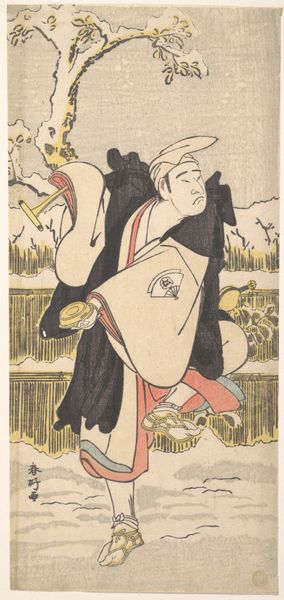
The Actor Otani Hiroji III, Armed with a Sword 1759 - 1779
0:00
0:00
print, woodblock-print
#
portrait
# print
#
asian-art
#
ukiyo-e
#
figuration
#
woodblock-print
#
men
#
sword
Dimensions: H. 12 1/2 in. (31.8 cm); W. 5 3/4 in. (14.6 cm)
Copyright: Public Domain
Editor: So, this woodblock print, “The Actor Otani Hiroji III, Armed with a Sword,” by Ippitsusai Bunchō, created sometime between 1759 and 1779...it's striking! The actor's gaze is so intense, and his posture feels…unconventional? What strikes you about this piece? Curator: I see a challenge to societal norms embedded in this seemingly straightforward portrait. Consider the historical context: ukiyo-e prints, like this one, were often seen as popular entertainment, depicting actors, courtesans, and everyday life. But Bunchō presents us with something more. Editor: More? In what sense? Curator: Look at the portrayal of Otani Hiroji III. He is clearly a man, yet his exaggerated features, almost cartoonish, alongside his stylized stance, prompt us to consider questions of performativity and identity. His presentation goes against many gender expectations in how he expresses himself as a male subject. What message do you think the artist is communicating by not being bound to traditional art restrictions? Editor: I see what you mean. It’s like he’s challenging us to think about how masculinity is constructed and performed. But it makes me wonder: How would audiences at the time have perceived this portrayal? Curator: Exactly! Was this a subversive commentary on power and representation, or simply a reflection of the fluidity inherent in Kabuki theater itself? And how do we, as contemporary viewers, grapple with these layers of meaning? Editor: I hadn't considered it that way. Seeing this artwork not just as a portrait, but as a dialogue on identity, gender, and social norms, completely changes how I appreciate it. Curator: Precisely. Art offers a window into the complex, often contradictory, narratives that shape our understanding of the world, and our place within it. This print reminds us of the ongoing need to examine, critique, and deconstruct those narratives.
Comments
No comments
Be the first to comment and join the conversation on the ultimate creative platform.
